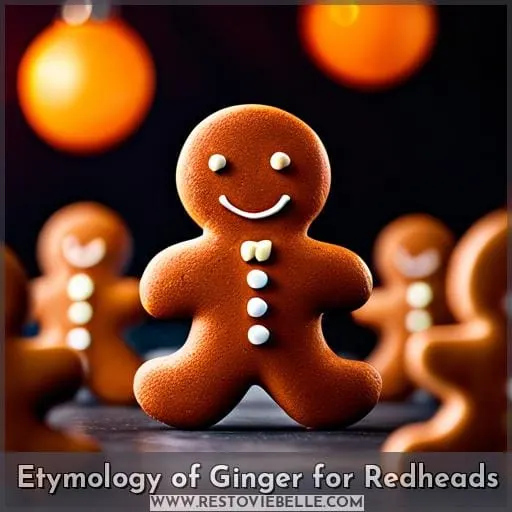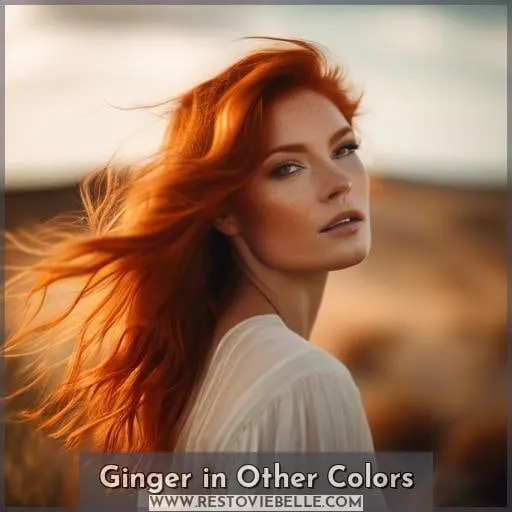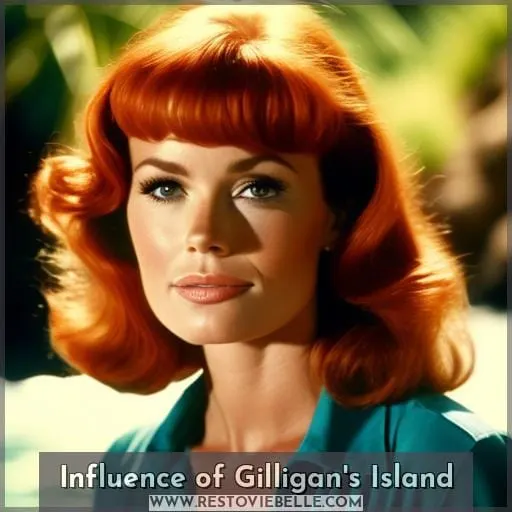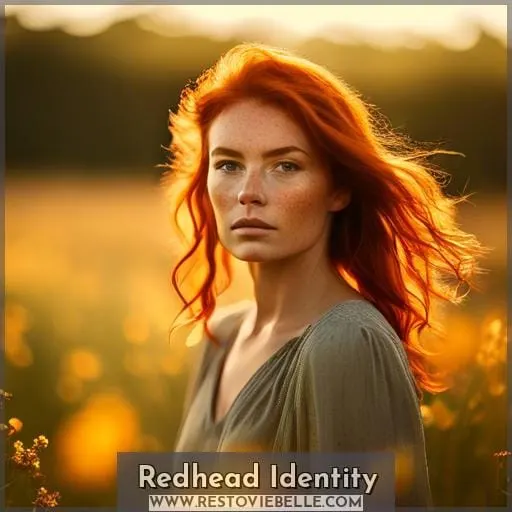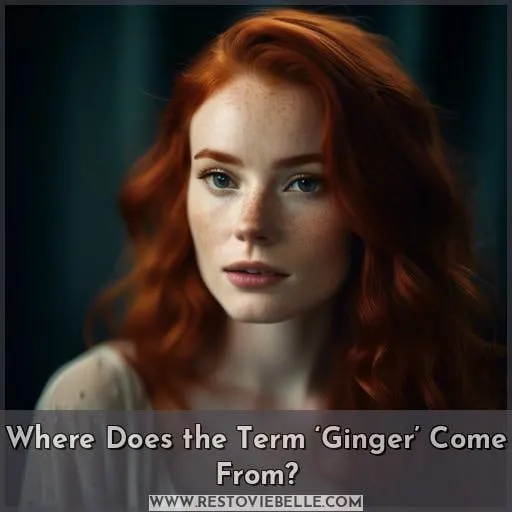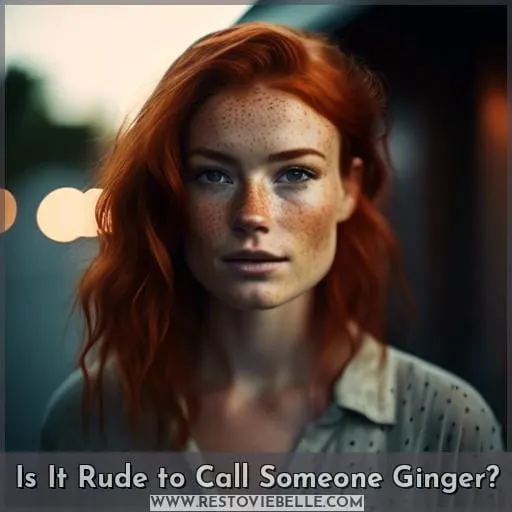This site is supported by our readers. We may earn a commission, at no cost to you, if you purchase through links.
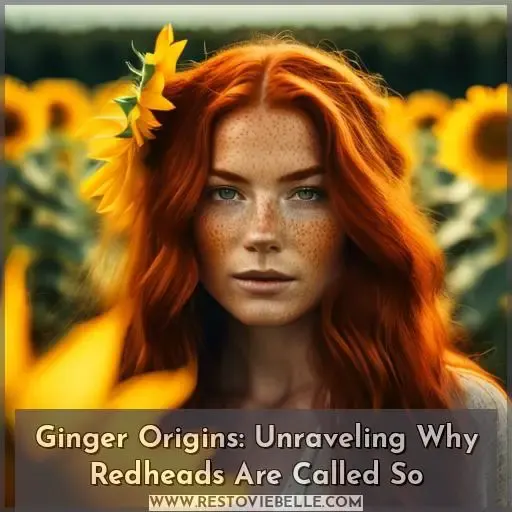 Ironically, while the spice ginger adds zest to dishes worldwide, its name has seasoned conversations about hair color in far more complex ways.
Ironically, while the spice ginger adds zest to dishes worldwide, its name has seasoned conversations about hair color in far more complex ways.
You’ve likely heard redheads affectionately—or not so affectionately—called gingers. This term, rich in cultural history and etymological twists, has roots that are as colorful as the hair it describes.
From ancient associations with the exotic and fiery to modern-day pop culture references, the journey of the word ginger in relation to red hair is a fascinating exploration of linguistic shifts and cultural practices.
As we delve into why redheads are called so, you’ll discover a tapestry of theories, each adding a unique shade to the redhead identity and its social impact.
Redheads are called ginger due to associations with the reddish tinge of ginger-flavored foods and the influence of media, such as the character Ginger from Gilligan’s Island. The term’s exact origin is unclear, with theories ranging from the color of ginger root to historical references to the Malaysian Ginger Plant.
Table Of Contents
- Key Takeaways
- Etymology of Ginger for Redheads
- Ginger in Other Colors
- Ginger in Baked Goods
- Influence of Gilligan’s Island
- Redhead Identity
- Social Impact
- Where Does the Term ‘Ginger’ Come From?
- Is It Rude to Call Someone Ginger?
- Frequently Asked Questions (FAQs)
- How does the ginger gene mutation affect overall health beyond hair color?
- Are there any historical figures who were notably referred to as ginger in their time?
- What are the scientific explanations for the stereotypes associated with redheads, such as having a fiery temper?
- How has the representation of redheads in literature and art evolved over the centuries?
- Can the term ginger be found in any significant legal or political documents throughout history?
- Conclusion
Key Takeaways
- The term ginger for redheads may have originated from the reddish tinge of ginger-flavored foods like ginger cake, gingerbread, and ginger snaps, reflecting a cultural practice of using food to describe human features.
- The usage of ginger to describe redheads has evolved through various cultures and languages since the 18th and 19th centuries, highlighting the dynamic nature of language and its adaptability.
- Media representations, such as the character Ginger from Gilligan’s Island with light red hair, have played a significant role in shaping and perpetuating redhead stereotypes, contributing to the term ginger gaining traction.
- Redhead identity is complex and multifaceted, involving genetics (MC1R gene), cultural significance, and a growing movement to challenge negative stereotypes and celebrate redhead uniqueness through events like Redhead Day.
Etymology of Ginger for Redheads
You might wonder how the term ‘ginger’ came to describe someone with red hair. It’s a journey that takes us back to the 18th and 19th centuries, where the vibrant red ginger plant first hinted at this connection.
Over time, the term evolved, weaving through various cultures and languages, to highlight the unique redhead’s hair coloring. This linguistic shift reflects deeper societal attitudes towards redheads, often perpetuating redhead stereotypes.
While some find the term offensive, it’s crucial to understand its roots in our language and culture. The redhead community’s response to ‘ginger’ varies, embodying a mix of acceptance and resistance.
This etymological exploration offers a glimpse into how words shape our perception of others, urging a thoughtful consideration of the language we use.
Ginger in Other Colors
While the term ginger is most commonly associated with red hair, its application stretches beyond this singular hue. Interestingly, historical references reveal that ginger has also been used to describe other colors.
For instance, instances from the 19th century show ginger hackled and simply ginger being used in contexts that may not directly relate to the fiery red we often think of today. This linguistic flexibility suggests that the term’s association with color is more nuanced than a straightforward link to red hair.
The etymology of ginger in relation to hair color is deeply rooted in cultural history and linguistic shifts. Initially, the connection might’ve been inspired by the reddish hues of certain ginger plants or the warm, vibrant color of ginger-flavored food and baked goods.
Over time, these associations evolved, with the term ginger becoming a catch-all descriptor for various shades of red, and occasionally, even beyond red.
The term’s adaptability in describing colors reflects a broader cultural practice of using food and natural elements to describe human features, such as olive skin or peachy cheeks. In the case of ginger, its use to denote red hair and occasionally other colors underscores the dynamic nature of language and how cultural and societal influences shape and expand the meanings of words.
This linguistic evolution mirrors the diverse experiences and identities within the redhead community, where the term ginger can evoke a range of emotions, from pride to discomfort, depending on personal and cultural contexts.
Ginger in Baked Goods
Transitioning from the discussion of ginger’s presence in various colors, we now delve into its significant role in the culinary world, particularly in baked goods.
The history of gingerbread and gingersnap cookies is as rich and layered as the flavors of these beloved treats. Originating from ancient civilizations, gingerbread has evolved from a ceremonial food to a festive holiday staple.
The reddish-brown hue of gingerbread and gingersnap cookies, reminiscent of roux and red hair, adds a visual warmth that complements their spicy sweetness.
The inclusion of ginger, along with cinnamon and other spices, not only imparts a distinctive flavor but also connects these treats to the fiery temperament often associated with redheads. Whether it’s the soft, chewy texture of gingerbread or the crisp snap of gingersnaps, these ginger-colored treats have become synonymous with comfort and celebration.
The evolution of gingerbread houses and the popularity of gingersnap cookies during events like Muster Day further highlight ginger’s cultural significance. As we explore the gingerful world of baked goods, it’s clear that the connection between ginger, its color, and its culinary uses is deeply rooted in history and tradition.
Influence of Gilligan’s Island
Moving from the warm hues of gingerbread to the vibrant world of television, let’s delve into the cultural impact of Gilligan’s Island, a show that subtly influenced the redhead narrative. The character Ginger, with her light red hair, became an iconic figure, contrasting the girl-next-door Mary Ann.
- Character Popularity: Ginger’s role as a glamorous Hollywood star set a precedent for associating red hair with allure and sophistication.
- Redhead Stereotypes: The dichotomy between Ginger and Mary Ann reinforced certain redhead archetypes—Ginger as the fiery temptress versus Mary Ann’s wholesome image.
- Media Influence: The show’s widespread popularity meant that these characters’ hair colors and personalities left a lasting impression on audiences, shaping perceptions of redheads.
- Cultural Impact: As viewers embraced these characters, the term ginger for redheads gained traction, illustrating how media representation can drive term evolution and influence societal attitudes toward physical traits.
Redhead Identity
As you’ve seen from the character Ginger on Gilligan’s Island, media can significantly influence perceptions of redheads. But beyond fictional characters, the redhead identity is complex and deeply rooted in genetics and cultural representation.
Red hair genetics are fascinating, with the MC1R gene playing a crucial role in giving redheads their distinctive pale skin and reddish tinge. Despite this biological uniqueness, redhead stereotypes persist, often portraying redheads as fiery-tempered or different.
However, the redhead community is embracing Redhead pride, celebrating their unique hair color and challenging negative stereotypes. Events like Redhead Day illustrate a growing sense of Redhead representation and community, where redheads from around the world connect and celebrate their fiery locks.
This shift towards embracing the redhead identity shows a move away from the stigma and towards a celebration of diversity. Redheads are more than a stereotype; they’re a vibrant community with a rich genetic tapestry, deserving respect and recognition.
Social Impact
As you’ve explored the complexities of redhead identity, it’s crucial to consider the social impact of the term ‘ginger.’ Prejudice against redheads, often referred to as ‘gingerism,’ is a real phenomenon, with stereotypes painting redheads as having a fiery temper or being the butt of jokes.
Media portrayals have reinforced these stereotypes, with shows like ‘South Park’ sparking controversy and even hate crimes against redheads. The episode Ginger Kids was intended as satire but led to real-world bullying and discrimination, highlighting how media can inadvertently fuel prejudice.
Cultural and historical perspectives offer insight into why these attitudes persist. In some cultural studies, redheads have been seen as outsiders or othered due to their rarity and distinct appearance.
This othering can lead to both fascination and ridicule, affecting how redheads are treated in society. The importance of respectful language and representation is paramount, as it shapes societal attitudes towards physical traits like red hair.
While some in the redhead community may embrace the term ‘ginger,’ it’s essential to recognize that for others, it carries a weight of offensive connotations and a history of being used derogatorily.
Where Does the Term ‘Ginger’ Come From?
Continuing from the social nuances surrounding the term ginger, let’s delve into its origins.
-
Red Ginger Plant: The term ginger for redheads may have originated from the red ginger plant, known for its vibrant red flowers. This connection dates back to the 18th and 19th centuries, suggesting a link between the plant’s color and ginger hair.
-
Ginger Root: While the ginger root itself isn’t red, its fiery taste and the reddish-brown color of ginger-infused treats like gingerbread could have contributed to the association with the warm hues of ginger hair.
-
American TV: The character Ginger from the American TV show Gilligan’s Island popularized the term, reinforcing the ginger gene’s association with red hair in modern culture.
-
Northern and Western Europe: The prevalence of red hair in regions like Scotland, where the highest percentage of redheads can be found, may have influenced the term’s adoption in ginger culture, tying it to the origin of the ginger gene.
These elements together paint a picture of how the term ginger became intertwined with red hair, reflecting a rich tapestry of linguistic shifts and cultural practices across different regions, from Northern and Western Europe to the influence of American television.
Is It Rude to Call Someone Ginger?
When it comes to calling someone ginger, the waters are murky. The term’s history is rich, tracing back to various origins, including the fiery nature of ginger root and the reddish hues of ginger-flavored foods.
Yet, its acceptance varies widely. For some, ginger is a term of endearment, a nod to the unique beauty of red hair, fair skin, and often blue eyes—a genetic marvel shaped by climate adaptation and centuries of cultural significance.
However, for others, the term carries the weight of bullying, stigmatization, and a sense of otherness that can’t be shaken off.
The evolution of language and the impact of media have played significant roles in shaping the term’s current standing. Iconic characters like Ginger Grant from Gilligan’s Island and the controversial South Park episode have both popularized and polarized the term, embedding it further into the cultural lexicon.
Yet, beneath the surface of these pop culture references lies a deeper conversation about identity, preference, and respect.
Whether ginger is considered a slur or a simple descriptor hinges on personal experience and the context in which it’s used. It’s a reminder of the power of language to both unite and divide, to celebrate and to marginalize.
As we navigate these conversations, the key lies in understanding and respecting individual preferences, acknowledging the complex tapestry of history, genetics, and cultural practices that shape our identities.
Frequently Asked Questions (FAQs)
How does the ginger gene mutation affect overall health beyond hair color?
The ginger gene mutation, primarily in the MC1R gene, can increase your sensitivity to pain and the risk of skin cancer.
Additionally, this genetic variation could potentially be linked to an increased susceptibility to Parkinson’s disease.
Are there any historical figures who were notably referred to as ginger in their time?
Historical figures like Queen Elizabeth I, Vincent Van Gogh, and George Washington were known redheads.
What are the scientific explanations for the stereotypes associated with redheads, such as having a fiery temper?
Ever wondered why redheads are stereotyped as fiery-tempered?
Scientifically, there’s no concrete evidence linking red hair to personality traits like a fiery temper.
These stereotypes are cultural constructs, not genetic predispositions.
How has the representation of redheads in literature and art evolved over the centuries?
Redheads in literature and art have transitioned from symbols of otherness and exoticism to characters celebrated for their uniqueness and spirit.
Their portrayal reflects changing cultural attitudes and artistic trends over time.
Can the term ginger be found in any significant legal or political documents throughout history?
While the term ginger for redheads isn’t typically found in significant legal or political documents, it’s intriguingly present in historical texts on trade and medicine.
Hinting at its deep-rooted cultural journey.
Conclusion
Woven through the annals of time, the term ‘ginger’ has become a vibrant thread in the cultural fabric, coloring the way we view redheads.
You’ve traced its etymology, seen its shades in baked delights, and witnessed its pop culture sparkle with Gilligan’s Island’s Ginger.
It’s clear that ‘ginger’ is more than a spice; it’s a symbol of identity and a marker of social nuances. Whether it’s embraced or met with mixed feelings, the moniker ‘ginger’ for redheads is a testament to the dynamic nature of language and its ability to capture the essence of our human tapestry.

